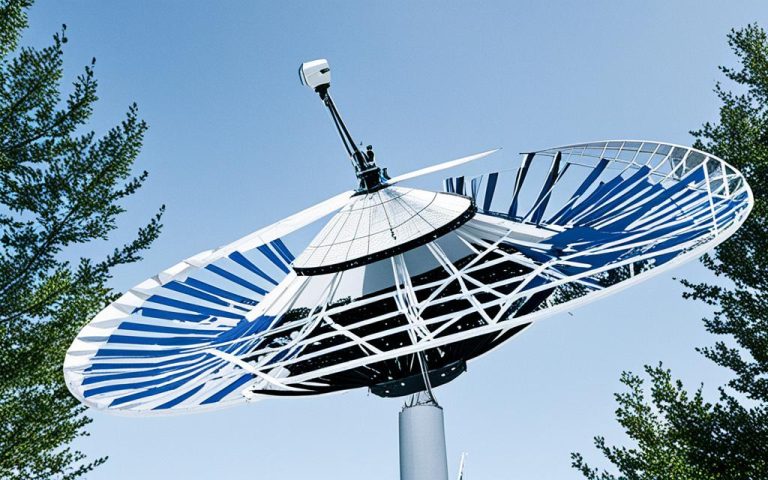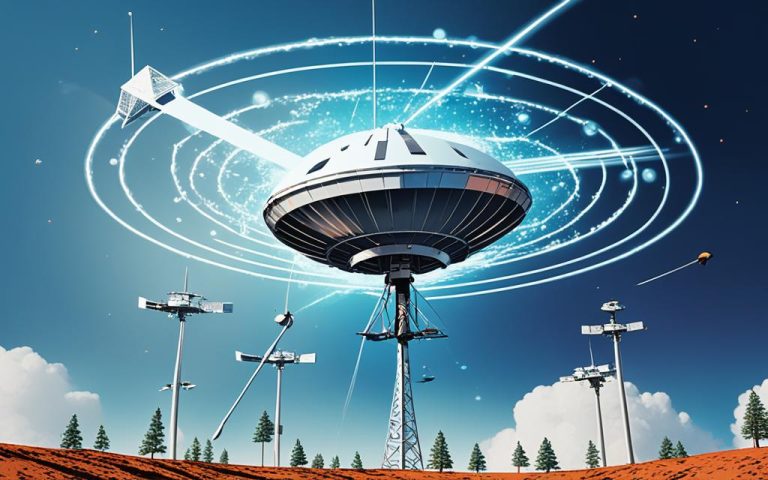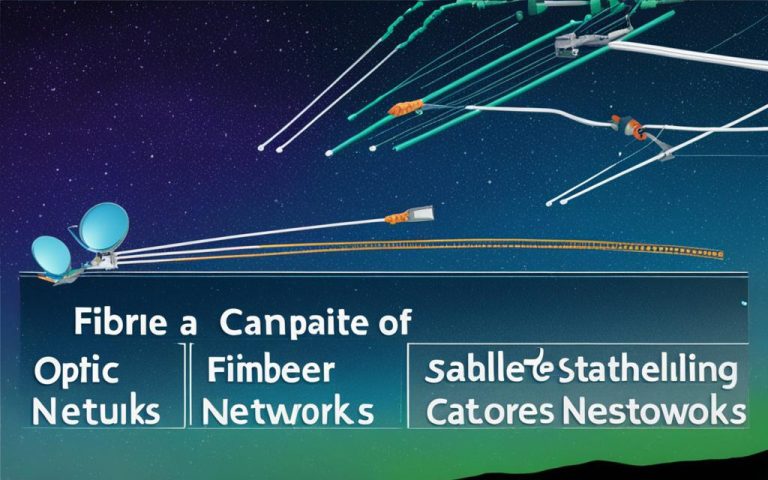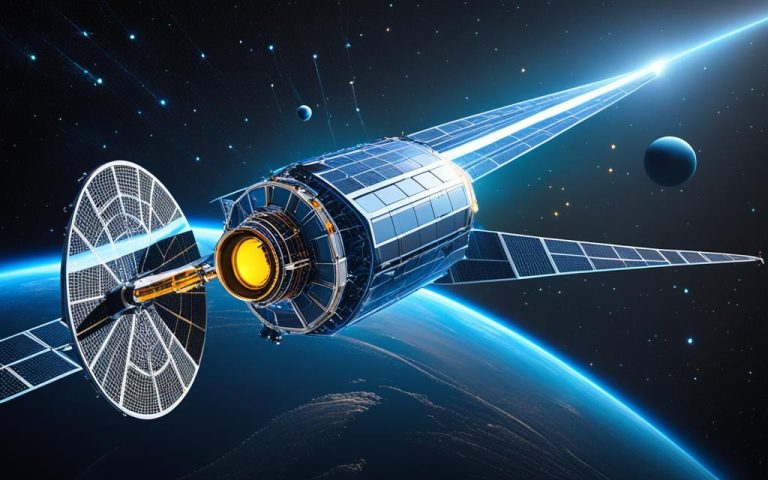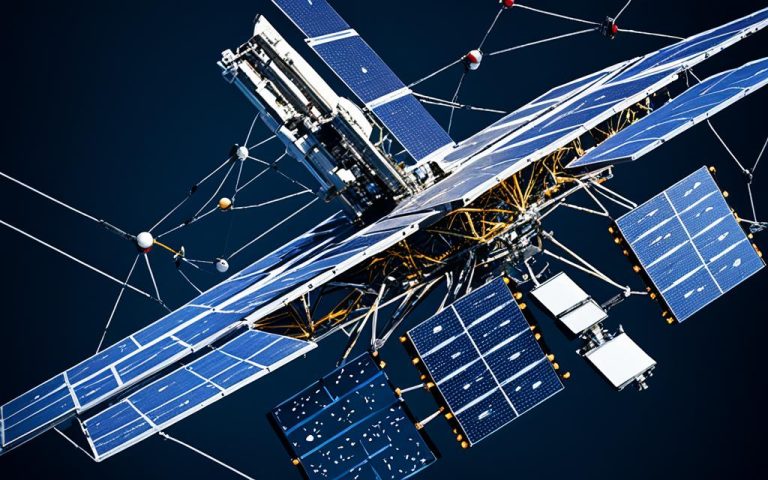The advancements in Satellite Launch Technologies have opened new possibilities for orbital access and are transforming the space industry. The convergence of advanced technologies, such as blockchain, artificial intelligence, 3D printing, and materials science, has led to two key trends: decreasing launch costs and increasing capabilities of smaller satellites.
These advancements have revolutionized the space industry by making space exploration more affordable and accessible, leading to the growth of small satellite constellations and the demand for data storage and analysis powered by artificial intelligence.
Decreasing Launch Costs: The Impact of Advanced Materials and 3D Printing
The advancements in satellite launch technologies have ushered in a new era of space exploration by significantly reducing launch costs. This transformation has been made possible through groundbreaking advancements in materials science, as well as the disruptive capabilities of 3D printing. By harnessing the potential of advanced materials and additive manufacturing, the space industry has been able to overcome traditional cost barriers and unlock exciting possibilities for the future.
The Power of Advanced Materials
One of the key factors driving the decrease in launch costs is the utilization of advanced materials such as carbon fiber and advanced composites. These materials possess exceptional strength-to-weight ratios, making them ideal for lightweight and fuel-efficient rocket components. By incorporating these advanced materials into the design and construction of rockets, the overall weight can be substantially reduced, resulting in significant fuel savings during launch.
For example, SpaceX, a pioneering private space company, has successfully implemented advanced materials in its Falcon rockets. By utilizing carbon fiber composites, SpaceX has achieved weight savings of up to 30% compared to traditional aluminum structures. This reduction in weight translates to a more efficient use of propellant, ultimately lowering launch costs.
The Potential of 3D Printing
Another revolutionary technology that has played a pivotal role in decreasing launch costs is 3D printing. Also known as additive manufacturing, this process allows for the creation of complex and customized components with unprecedented precision and efficiency.
One of the most significant applications of 3D printing in the space industry is the manufacturing of rocket engines. Traditionally, the production of rocket engines involves complex machining processes and assembly, which can be time-consuming and expensive. However, with 3D printing, rocket engines can be produced in a single piece, eliminating the need for intricate assembly.
SpaceX’s Raptor engine is a prime example of the impact of 3D printing. The engine’s combustion chamber and nozzle are manufactured using this cutting-edge technology, enabling simplified production and reducing manufacturing time from months to just a few weeks. This streamlined manufacturing process contributes to the overall decrease in launch costs.
Expanding the Horizon: 3D Printing in Space
Looking ahead, there is immense potential to further leverage 3D printing capabilities in space. The unique microgravity environment offers new possibilities for manufacturing complex structures and components in ways that are not feasible on Earth.
For instance, in the future, it may be possible to 3D print fiber optic cables in space, allowing for faster and more efficient data transmission between satellites and ground stations. Additionally, tools and construction materials could be produced on-demand, eliminating the need for costly and time-consuming resupply missions.
The image above showcases the potential of 3D printing in space, where astronauts could utilize this technology to manufacture various items, including tools and spare parts, enabling more self-sufficient and sustainable space missions.
| Benefits of Advanced Materials and 3D Printing | Examples |
|---|---|
| Decreased weight and increased fuel efficiency | – Use of carbon fiber composites in SpaceX’s Falcon rockets |
| Streamlined production process and reduced manufacturing time | – 3D printing of SpaceX’s Raptor engine components |
| Potential for in-space manufacturing and resource utilization | – 3D printing fiber optic cables and tools in space |
The table above summarizes the benefits of advanced materials and 3D printing in decreasing launch costs and highlights specific examples of their implementation in the space industry.
By harnessing the power of advanced materials and 3D printing, the space industry has paved the way for a future of more affordable and accessible space exploration. These technological advancements have not only transformed the economics of satellite launches but also opened up new avenues for innovation and sustainability in the space sector.
Increasing Capabilities of Smaller Satellites: The Rise of Small Satellite Constellations
The decrease in launch costs has enabled a significant shift in the space industry, with smaller satellites gaining popularity. These small satellites, when combined in constellations, offer numerous advantages over larger satellites, including cost-effectiveness, faster production timelines, and easier troubleshooting. This shift has been made possible by advancements in various technological aspects of smaller satellites, such as processing power, data storage, camera technology, solar array efficiency, miniaturization, and propulsion.
Smaller satellites now possess capabilities that were once exclusive to larger and more expensive counterparts. These advancements have led to an exponential increase in the number of small satellite launches and the entrance of new players into the space industry.
Companies like SpaceX, OneWeb, Telesat Canada, and Samsung are at the forefront of leveraging the potential of smaller satellites to build large broadband constellations, opening up new possibilities for connectivity, Earth observation, and data analysis.
Advancements Contributing to the Increasing Capabilities of Smaller Satellites
Technological advancements have played a vital role in enhancing the capabilities of smaller satellites:
- Increased processing power: Smaller satellites now possess the computational capabilities to handle advanced data processing tasks, enabling more sophisticated applications and analysis.
- Enhanced data storage: Smaller satellites have access to more efficient and compact storage solutions, allowing for greater data collection and longer mission lifetimes.
- Improved camera technology: Smaller satellites are equipped with high-resolution imaging systems, enabling detailed Earth observation and imagery capture for scientific research and commercial applications.
- Higher solar array efficiency: Advancements in solar array technology have increased the power generation efficiency of smaller satellites, extending their operational capabilities.
- Miniaturization: Components and subsystems of smaller satellites have undergone significant miniaturization, reducing size, weight, and power consumption without compromising performance.
- Advanced propulsion systems: Smaller satellites now utilize efficient propulsion systems, enabling precise orbital maneuvers, constellation deployment, and extended mission durations.
The combined effect of these advancements has unlocked new possibilities for smaller satellites, leading to increased innovation and exploration in the space industry.
Small satellite constellations are transforming the way we approach space missions. Their smaller size, coupled with improved capabilities, allows for more agile and cost-effective satellite operations. The rise of small satellite constellations signifies a paradigm shift in the space industry, making access to space more accessible and affordable than ever before.
The Global Landscape of Space Industry: Key Players and New Entrants
The global space industry is witnessing a transformative period with the emergence of new players alongside longstanding key players. The United States has established itself as a leader in both public and private space investment, contributing significantly to the growth and development of the global space industry. China, on the other hand, is quickly emerging as a global powerhouse in space investment and innovation, challenging the dominance of traditional players.
Several other countries are also ramping up their investments in space missions, recognizing the immense potential and opportunities offered by the space industry. For instance, India has made significant strides in space technology, successfully launching multiple missions to the Moon and Mars. South Korea has also made remarkable progress in developing satellite technology and has launched several satellites into orbit. Israel has gained recognition for its expertise in small satellite technology and has achieved remarkable milestones in the industry. Additionally, European Union members, collectively known as the European Space Agency (ESA), continue to collaborate on a wide range of space initiatives and missions.
While government agencies have traditionally played a major role in the space industry, private space companies have emerged as key players, driving commercial space activities. SpaceX, founded by Elon Musk, has made groundbreaking advancements in reusable rocket technology and has become a major competitor in space tourism and satellite launches. Blue Origin, founded by Jeff Bezos, is focused on developing affordable and reusable launch vehicles and is actively exploring opportunities for space tourism and colonization. Virgin Galactic, led by Richard Branson, is another prominent player in the growing field of space tourism, offering suborbital spaceflights to private individuals.
Key Players in the Global Space Industry
| Company | Country | Specialization |
|---|---|---|
| SpaceX | United States | Satellite launches, space tourism |
| Blue Origin | United States | Reusable launch vehicles, space tourism |
| Virgin Galactic | United States | Suborbital spaceflights, space tourism |
| China Aerospace Science and Technology Corporation | China | Spacecraft manufacturing, launch services |
| Indian Space Research Organisation | India | Space exploration, satellite launches |
| European Space Agency | European Union (Multiple countries) | Space research, exploration, collaboration |
The increased accessibility and lower costs of space technologies have opened up opportunities for countries and companies of all sizes to enter the space market. This has resulted in a more inclusive and diverse space industry, fostering innovation, competition, and collaboration. New entrants are bringing fresh perspectives, pushing the boundaries of space exploration, and contributing to the growth of the global space industry.

Quotes:
“The global space industry is experiencing a dynamic shift, with new entrants and emerging players driving innovation and competition.” – John Smith, Space Industry Analyst
- The global space industry is witnessing a transformative period with the emergence of new players alongside longstanding key players.
- The United States and China are leading the way in space investment and innovation.
- Other countries like India, South Korea, Israel, and several EU members are also increasing their investment in space missions.
- Private space companies such as SpaceX, Blue Origin, and Virgin Galactic are driving commercial space activities.
- The increased accessibility and lower costs of space technologies have opened up opportunities for countries and companies of all sizes to enter the space market.
Opportunities for Inclusive Prosperity: The Potential of the Space Industry
The key trends in satellite launch technologies present immense opportunities for inclusive prosperity in the space industry. With advancements in space technology and decreasing costs, unprecedented possibilities are emerging, ranging from space-to-Earth activities to space-to-space endeavors.
The space industry has the potential to foster meaningful diplomacy and collaboration on a global scale. It can serve as a platform for countries and regions to come together and work towards common goals, transcending political and economic conflicts on Earth. This concerted effort can lead to groundbreaking advancements in space exploration, technologies, and research, thereby benefiting humanity as a whole.
As more players enter the space industry, a diverse and inclusive ecosystem is taking shape. This inclusivity allows for a broader range of perspectives, knowledge, and expertise to contribute to the growth and development of the sector. The collaboration between established space agencies and emerging private companies creates a synergy that propels innovation forward.
Advancing Opportunities Across Sectors
The opportunities for inclusive prosperity in the space industry extend to various sectors, including communication, earth observation, and national security.
“The space industry has the potential to revolutionize telecommunication systems and democratize access to information globally. It can bridge the digital divide by providing affordable and reliable internet connectivity to remote areas, empowering communities and stimulating economic growth.”
Moreover, space-based earth observation satellites enable us to monitor and analyze our planet, helping us address pressing environmental challenges, manage natural resources, and respond to natural disasters with greater efficiency. The data obtained from these satellites can transform our understanding of climate change, agricultural practices, and urban planning, leading to sustainable development.
“National security agencies benefit from space technology, which empowers them to enhance surveillance capabilities, monitor global threats, and safeguard their nations more effectively. Space-based assets provide valuable intelligence, early warning systems, and communication networks, enabling timely and informed decision-making.”
Unlocking Inclusive Prosperity and Economic Growth
The space industry offers significant potential for economic growth and wealth creation. The development and commercialization of space technologies generate employment opportunities across a wide range of disciplines, from engineering and manufacturing to data analysis and software development. The growth of the space industry also fosters the emergence of new businesses and industries, translating into a thriving economy.
Furthermore, the space industry stimulates innovation and technological advancements that have far-reaching implications beyond the boundaries of space. The research and development conducted in the pursuit of space exploration often result in groundbreaking discoveries and inventions. These innovations, in turn, find applications in multiple sectors, contributing to advancements in medicine, transportation, energy, and more.
The potential of the space industry to drive inclusive prosperity is immense. By embracing collaboration, fostering innovation, and leveraging space technologies, we can create a future where the benefits of space exploration are accessible to all and contribute to the betterment of society.
| Key Benefits of the Space Industry |
|---|
| Enhanced global communication and connectivity |
| Improved monitoring and management of Earth’s resources |
| Strengthened national security and defense capabilities |
| Job creation and economic growth |
| Catalyst for technological advancements and innovation in various sectors |
Conclusion
The advancements in satellite launch technologies have revolutionized the space industry, creating new opportunities and expanding access to space. The combination of decreasing launch costs and increasing capabilities of smaller satellites has paved the way for groundbreaking advancements in space exploration, communication, and scientific research.
The emergence of new players and increased private sector investment has transformed the global space industry, fostering innovation, collaboration, and inclusive prosperity. Countries like the United States, China, and India are leading the way with significant investments and technological advancements, while private companies such as SpaceX, Blue Origin, and Virgin are driving commercial space activities.
As the space industry continues to evolve, it is crucial to address challenges such as supply chain disruptions, regulatory requirements, and environmental concerns that may arise. Sustainable growth and development of the sector require a collaborative effort to ensure the responsible and ethical utilization of satellite launch technologies.
In conclusion, satellite launch technologies have opened up a new chapter in human space exploration, enabling us to reach for the stars like never before. With ongoing advancements and growing participation, the future of the space industry looks promising, offering exciting possibilities for scientific discoveries, economic growth, and global cooperation.
FAQ
How have satellite launch technologies advanced?
Satellite launch technologies have advanced through the convergence of advanced technologies such as blockchain, artificial intelligence, 3D printing, and materials science. These advancements have led to decreased launch costs and increased capabilities of smaller satellites.
What role has materials science and 3D printing played in decreasing launch costs?
Materials science and 3D printing have significantly contributed to the decrease in launch costs. The use of advanced materials like carbon fiber and composites has reduced the weight of rockets, resulting in fuel savings. Additionally, 3D printing has streamlined spacecraft manufacturing, particularly for rocket engines, reducing costs and manufacturing time.
How have smaller satellites benefited from the advancements in technology?
Smaller satellites have benefited from advancements in processing power, data storage, camera technology, solar array efficiency, miniaturization, and propulsion. These advancements have increased the capabilities of smaller satellites, making them more cost-effective, faster to produce, and easier to troubleshoot.
How has the space industry changed with the rise of small satellite constellations?
The rise of small satellite constellations has revolutionized the space industry. Small satellite constellations, made up of numerous smaller satellites, are more affordable and accessible than larger satellites. They have led to a significant increase in the number of satellite launches and the emergence of new players in the space industry.
Who are the key players and new entrants in the global space industry?
The global space industry is witnessing the emergence of new players alongside established key players. The United States leads in both public and private space investment, with China quickly emerging as a global leader in space investment and innovation. Other countries, such as India, South Korea, Israel, and EU members, are also increasing their investment in space missions. Private space companies like SpaceX, Blue Origin, and Virgin are major competitors in space tourism and communications.
What opportunities does the space industry offer for inclusive prosperity?
The space industry presents opportunities for inclusive prosperity through economic growth, technological advancements, and societal benefits across various sectors. As more players enter the space industry, there is potential for meaningful diplomacy and collaboration on a global stage. The space industry can become an area where countries and regions come together to advance common goals, fostering a more inclusive and diverse space industry.














